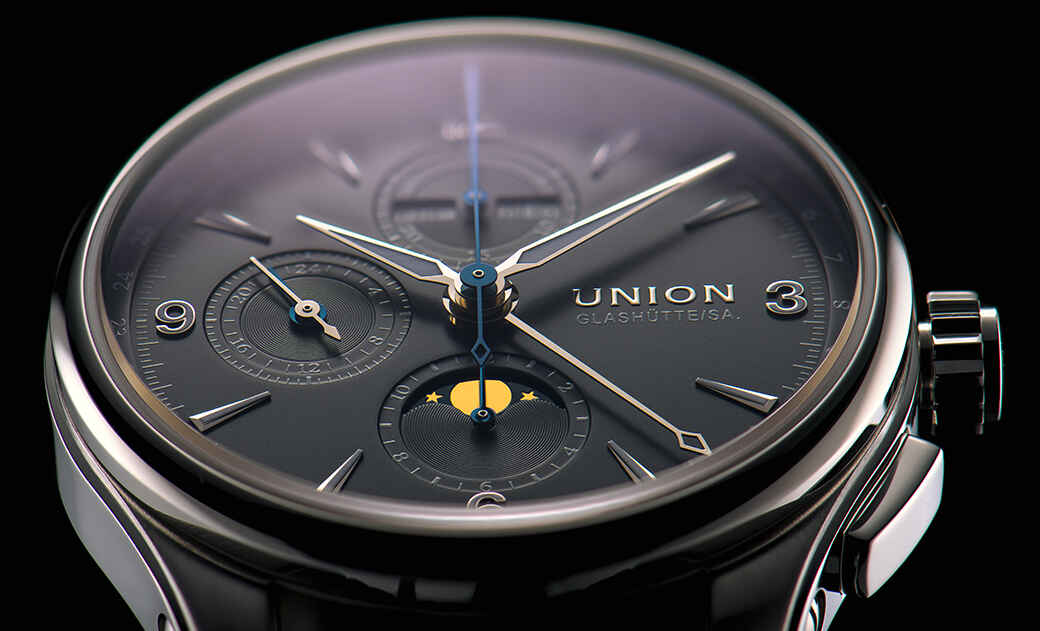Everything you need to know about the time change
One hour forward? Or an hour back? Every year, we start thinking about the time change all over again. But it's really quite simple! We've put together three simple tips for you so that you never have to ask yourself this question again:
Merksatz Nr. 1: Im Frühjahr kommen die Gartenmöbel VORS Haus und im Herbst wieder ZURÜCK ins Haus.
Merksatz Nr. 2: Im Sommer wird die Uhr vorgestellt - Im "Wünter" wird sie zurückgestellt.
Merksatz Nr. 3: Im Sommer zeigt das Thermometer PLUS und im Winter MINUS.
The crown is the most important control element not only for automatic watches, but also for watches with manual winding. It is used to set most functions, including the time and date. If you want to adjust a watch to change the time, you can usually do this using the second position of the crown. However, you need to be careful with watches with a quick date adjustment. On these models, the crown is often set to the third position and you can simply move the hands forwards and backwards. Changing the time is particularly easy on watches with a stop-seconds function: the second hand stops immediately after the crown is pulled and allows the time to be set to the second. The Robert Mühle moon phase men's watch from Mühle Glashütte, which you can find in our online store, also has this function.
Mechanical watches with a calendar or watches with a moon phase display, such as the Slimline Moonphase Manufacture from Frederique Constant, are sensitive and should only be changed with special care and in accordance with the instructions in the operating manual. As a rule, you need a special additional tool to change the time and often have to operate small pushers integrated into the case. If you are unsure about this, we will be happy to help and advise you: Contact us!
Caution: For special watches, such as diving watches and sports watches, you must first unscrew the screw-down crown before changing the time. Once you have set the watch, you should always screw the crown back in so that your watch is water-resistant again. You can find information on water resistance in our guide.
When you change your watch, it is best to make sure that you do this between 5 am and 5 pm. This is because many watches have to change from one date to the next over a period of time so that the movement does not wear out. For many manufacturers, this is between 10 pm and 2 am. You can find out in which time window your watch is in the changeover phase in the corresponding operating instructions.
Doctors have identified negative effects of the time change, as the internal biological clock has difficulty adapting to it with your rhythm. The time change affects the body like a mini-jetlag: many people complain of daytime sleepiness, difficulty falling asleep and staying asleep, irritability, concentration problems, fluctuations in heart rate or even digestive disorders.
To counteract these symptoms, those affected should go to bed a few days earlier and eat their meals earlier than usual. In the days leading up to the time change, try to get some fresh air and sunshine in the morning. This inhibits the production of the sleep hormone melatonin and makes you feel fitter.
You should skip your afternoon nap and go for a walk instead. Avoid sleeping pills and try a soothing cup of tea before going to sleep. A warm bath often works wonders too.







